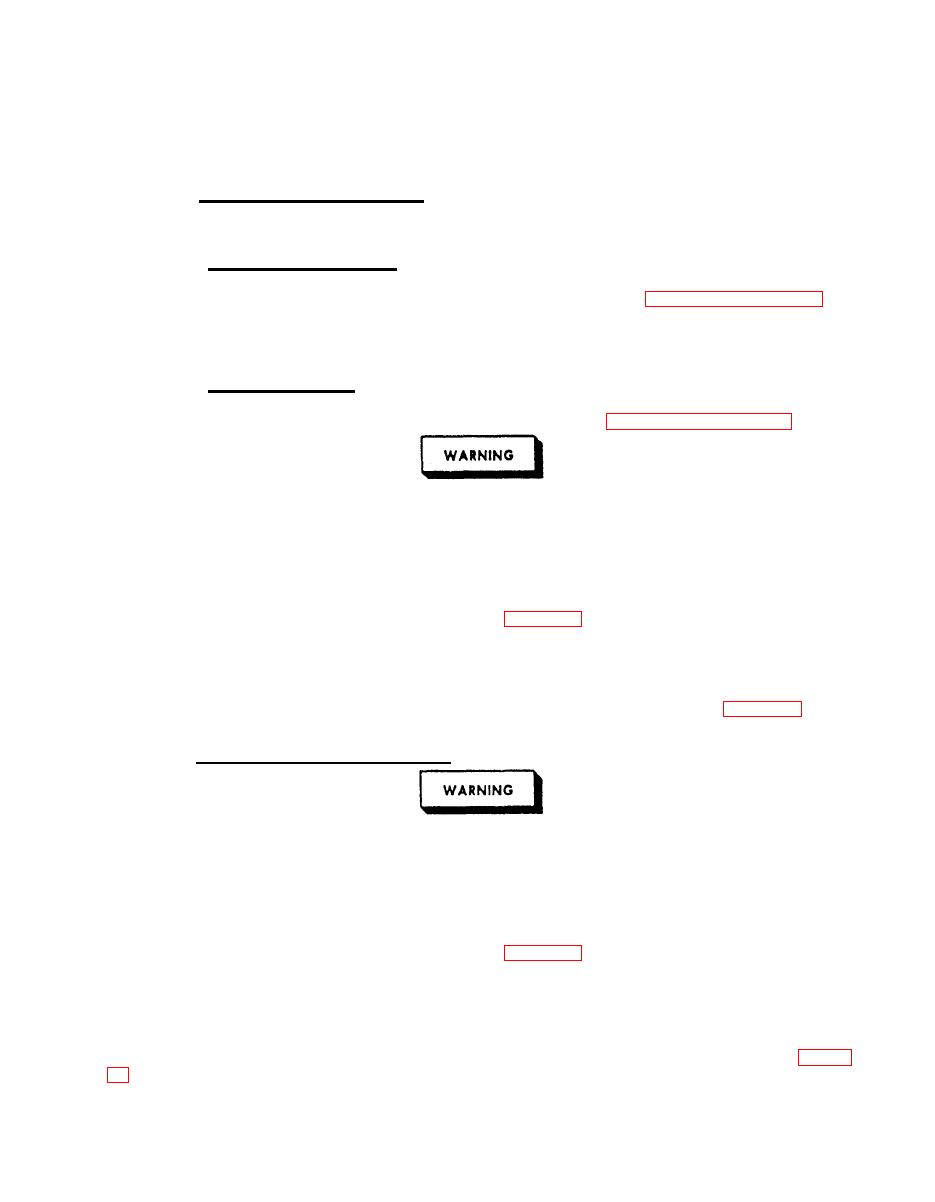 |
|||
|
|
|||
|
|
|||
| ||||||||||
|
|
 TM 32-5865-216-24&P
Remove the two screws (16) , lock washers (17), flat washers
d.
(18), and nuts (19) that secure each resistor to the chassis
and remove resistor.
(21), and lock washers (22), that secure each hook (23) to the front
panel (24).
Remove each hook.
Diode CR1 Removal.
Remove bottom panel (5) in accordance with paragraph 5-10.2.
a.
b.
Tag and unsolder the two wires to the diode (25) from terminals
Remove the diode.
E7 (39) and E8 (39).
Decal Removal.
Remove top cover (3) in accordance with paragraph 5-10.1.
a.
Adequate ventilation should be provided while using
trichlorotrifluoroethane.
Prolonged breathing of
vapor should be avoided.
The solvent should not be
used near heat or open flame; the products of
decomposition are toxic and irritating. Since
trichlorotrifluoroethane dissolves natural oils,
prolonged contact with skin should be avoided. When
necessary, use gloves (item 7, App. D) that the sol-
vent cannot penetrate.
If the solvent is taken
internally, consult a physician immediately.
Remove the old adhesive securing old decal (26) using cloth
b.
dampened (not wet) with trichlorotrifluorethane (item 19, App. D), and
pull away decal.
5-10.10. Warning
Plate
Removal.
Adequate ventilation should be provided while using
Prolonged breathing of
trichlorotrifluoroethane.
vapor should be avoided.
The solvent should not be
used near heat or open flame; the products of
decomposition are toxic and irritating. Since
trichlorotrifluoroethane dissolves natural oils,
prolonged contact with skin should be avoided. When
necessary, use gloves (item 7, App. D) that the sol-
If the solvent is taken
vent cannot penetrate.
internally, consult a physician immediately.
Remove the old adhesive securing the warning plate (27) using a
cloth dampened (not wet) with trichlorotrifluoroethane (item 19, App.
|
|
Privacy Statement - Press Release - Copyright Information. - Contact Us |